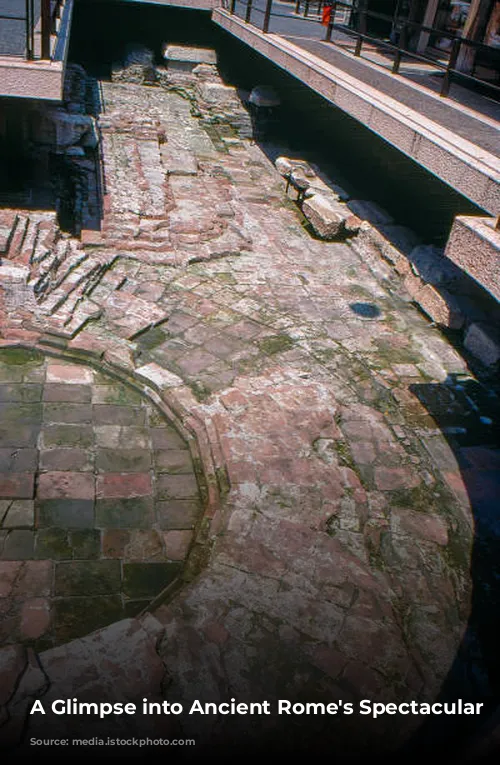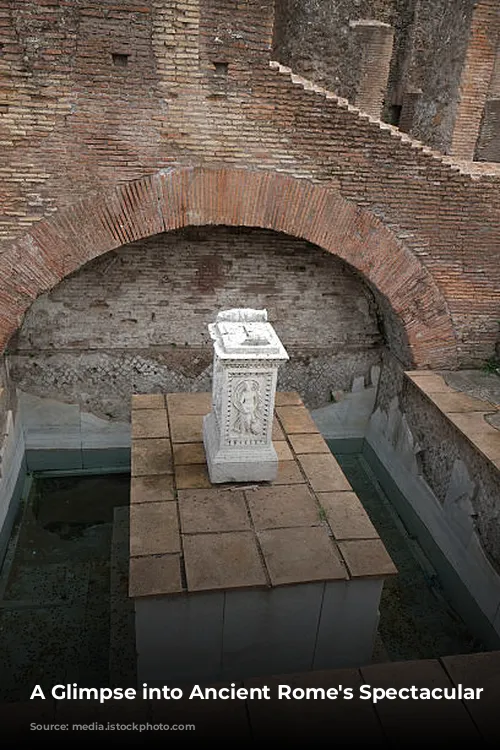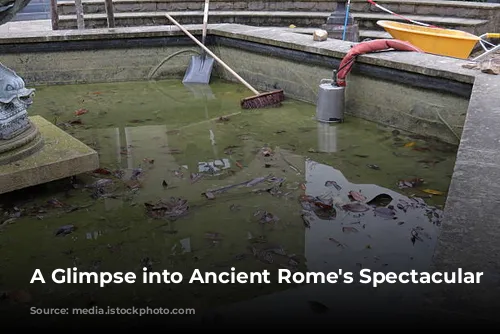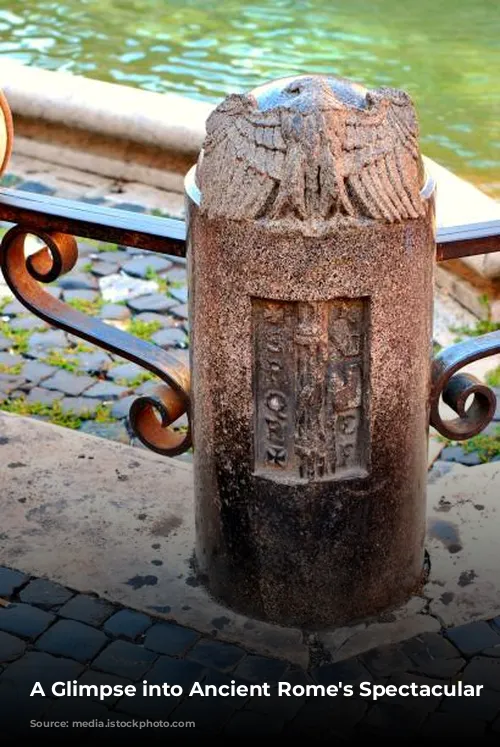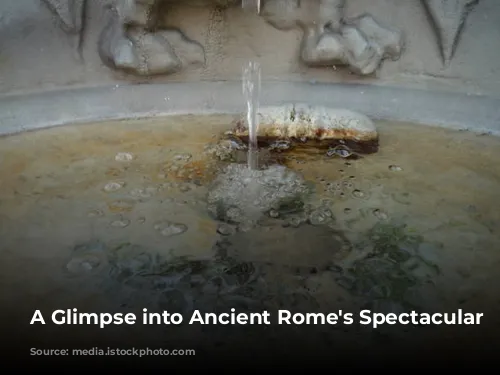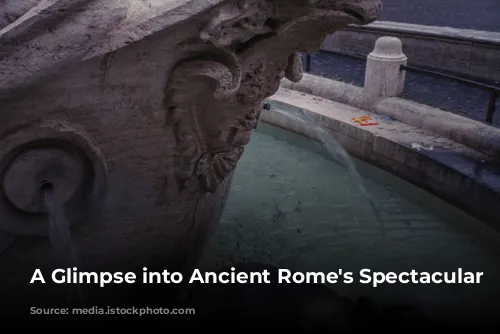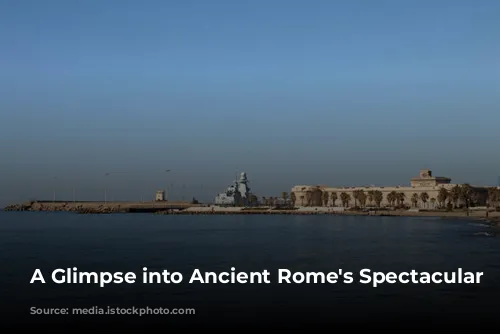Imagine being the event coordinator for a simulated naval battle in ancient Rome. You’d have to orchestrate a logistical nightmare. Just picture the chaos: filling a massive lake, arena, or man-made basin with water, then draining it. You’d need to gather a whole army of condemned criminals and prisoners of war, arm them with weapons, manage the huge crowds, and keep track of the ships—biremes, triremes, and even quinqueremes!
But wait, there’s more! You’d have to choreograph the combat, ensure security, import exotic sea creatures, and make sure the brothels are running smoothly—all while keeping the emperor happy. It’s enough to make you want to jump into the cesspool yourself!
A Legacy of Naumachiae: Spectacles of Brutal Entertainment
These spectacles, known as naumachiae, which translates to “naval combat,” are thought to date back to the 3rd century BC. They were incredibly rare, happening only four or five times in history. Imagine gladiator battles but on a grander scale, taking place in a vast pool. The competitors would reenact historical battles or just engage in savage mayhem. These events demanded immense resources, reserved only for the most momentous celebrations.
The first recorded naumachia was in 46 BC, celebrating Julius Caesar’s quadruple triumph. It was part of a massive festival that included music, horse racing, infantry and cavalry combat, and even elephant battles. The naumachia was a centerpiece, showcasing a clash of Tyrian and Egyptian fleets.
A Blood-Soaked Spectacle: The Naumachia’s Devastating Reality
Caesar’s naumachia was staged in a basin near the Tiber River with a mind-boggling 4,000 oarsmen and 2,000 fighters. While it’s unclear how much of the conflict was choreographed, it was a scene of wild mayhem. The sheer scale and novelty drew massive crowds, so large that people even camped along the streets to catch a glimpse.
This frenzied desire for entertainment led to tragic consequences: spectators trampled to death in the chaos. The spectacle even had a sexual side. The poet Ovid wrote that the naumachia was rife with drunkenness, debauchery, and opportunities for anonymous encounters. Prostitutes and brothels were an integral part of the festivities, adding to the spectacle’s allure.
From Emperors to Sea Monsters: The Naumachia’s Evolution
Augustus later hosted a naumachia in 2 BC, featuring 30 ships representing Persian and Athenian fleets. Claudius, in 52 AD, demanded his own version, this time on a lake with 19,000 soldiers and 100 ships. But when the prisoners refused to fight, Claudius had his imperial guard whip up some violence.
Nero, in 57 AD, went even further, staging a naumachia in a wooden amphitheater filled with water and exotic marine life, including seals and hippos. Sadly, the fate of these creatures after the water was drained remains a mystery. Titus, in 80 AD, featured a naval battle with 3,000 participants, showcasing the spectacle’s enduring popularity.
The Naumachia’s Legacy: A Glimpse into Ancient Roman Brutality
The Colosseum, the epitome of Roman spectacle, was also the site of a naumachia. The details are hazy, but it involved a violent rainstorm, leading to the deaths of all the participants and many spectators. Though the details are unclear, the existence of underground chambers beneath the Colosseum suggests that it might have been possible to flood the arena.
The naumachiae were a testament to the Romans’ love for spectacle. These events were massive, brutal, and often dangerous. They were a mix of historical reenactment, choreographed mayhem, and gratuitous violence, all designed to entertain and impress the emperor and his subjects.
Today, the naumachiae stand as a reminder of the ancient world’s brutality and its fascination with entertainment.

